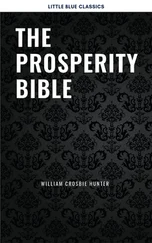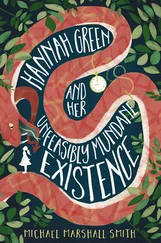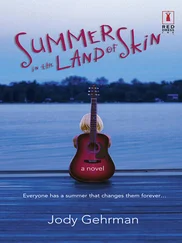The net gain principle set alongside the polluter-pays principle together ensure that there is enough money to pay for an enhanced natural environment. Add the money previously spent on perverse subsidies, instead going to environmental public goods, and the numbers stack up. We can have a greener and more prosperous Britain, without extra public expenditure.
A Nature Fund would need to be protected from the host of vested interests and from political opportunism. These interests are not just those opposed to the conservation of nature. They include nature organisations, which are notoriously fragmented and quarrelsome. With a pot of money, the Nature Fund will become a target for each and every interest to look after its own, whether specific species or specific habitats and locations. Its constitution matters, as do the rules of engagement. A Nature Fund should encourage cooperation and coordination for the prize as a whole.
The way to do this is to bring the opportunities together into an agreed practical plan to make it happen – a plan of how to integrate the myriad opportunities into coherent actions, and the necessary institutions to deliver this wonderful opportunity. It is about the full delivery, in spirit and letter, of the 25 Year Environment Plan published in 2018.[7] Some will say that this is too radical, but the real radicalism is in doing nothing, in allowing the business-as-usual to continue. This radically worsens the opportunities of the next generation, who will not only be deprived of swallows and flycatchers but, in the process of the continued destruction of nature, find the basic necessities of their lives increasingly compromised.
The 25 Year Environment Plan needs to integrate the principles behind it into the fabric of the economy and government. These are the two aims of the earlier 2011 White paper, ‘The Natural Choice’:[8] putting the environment at the core of the economy; and leaving the natural environment in a better state for the next generation. Although much may be achieved immediately and a number of reforms will help us along this path, to stand the test of economic crises and recessions and the sheer power of the hostile lobbyists, there needs to be an overarching legal and constitutional framework. As with climate change, politicians are good at the rhetoric, and they may well mean what they say, but permanently delivering it requires something more. The 2008 Climate Change Act changed the game. It is very hard to get out of its targets and the carbon budgets. We need something similar, a proper Nature Act that enshrines the principles in the 2011 White Paper and the 25 Year Environment Plan.
There is a choice: we can impoverish ourselves by continuing down the current path, or we can have a greener and more prosperous land, and one that is pleasanter too. The book concludes with this choice.
PART ONE
Imagine what our natural environment could look like in 25 years. Imagine bright colourful hay meadows full of wild flowers, birdsong and butterflies. Imagine cities with green trees along the streets, green parks and green Green Belts. Imagine the sounds of uplands, of golden plovers and curlews. Imagine beaches without plastic, and the loud noise of winter waders in the estuaries and marshes. Imagine wildlife corridors all around the coastline and across the land and along the rivers, roads, railways and canals. Imagine a marine world full once again of fish and free from the harrowing of the seabed by trawling. Imagine colour and beauty restored to the landscape. Wouldn’t it be wonderful?
This prize is not just a dream. It is perfectly practical and achievable, within our reach, and it would greatly enhance our lives and our economy. We don’t have to ‘go back to nature’, become austere and abandon capitalism. None of that is likely to happen anyway. Instead we need to embrace the most important type of capital: natural capital – the stuff nature gives us for free. We would be much more prosperous as a result. To make this possible, stand back and think big.
The prize comprises two parts: holding the line against further deterioration of existing natural capital; and creating and enhancing more of it. That is what leaving the environment in a better state for the next generation means. Not to go down this path is to court a significant loss of prosperity and make the next generation worse off. The question is just how much worse off. This chapter is about that prize; the next is about what happens if we don’t halt the destruction.
The natural capital that really matters is the renewables – the stuff that nature keeps on giving us for free for ever, provided we don’t deplete it below a threshold so it cannot continue to deliver its free bounty. Nature at threshold risk is the stuff of red lists and endangered species, and some of it is well known. To hold the line means that the sounds of cuckoos and turtle doves and nightingales and corncrakes are going to continue – for ever. But it also means protecting those renewables that are less obvious to the casual eye, and those assets we take for granted but that are actually in considerable danger. It is about the things we no longer see so often, like insects and butterflies, and about the once-common that is slipping from our grasp. How many people realise that the rabbits, which were ubiquitous, have now almost vanished from some areas? That the hares may follow? And how many have failed to notice that the swallows are harder to sight now? It means fertile and productive soils, lots of pollinators, clean water and clean air, and natural flood defences too. These rely on a host of creatures at the more microscopic level, and beneath the soils and under water.
The focus is often on the more iconic species at risk, since these are usually easy to measure and easy to design conservation strategies for. In almost every case, what is required is a habitat within which they can thrive, and an end to persecution. Species protection is all about these underlying critical natural infrastructures, which are every bit as important as man-made infrastructures in energy and transport. Although it might not actually matter greatly in the scheme of things if there are no bitterns or ospreys, it would matter if the reed bed ecosystems are gone and there is more eutrophication of rivers and lakes. Protecting particular species on the brink of their thresholds is typically good conservation generally, and the result is all sorts of other species benefits.[1]
Holding the line is not straightforward for the obvious reason that we are going backwards. Simply stopping more direct damage would not stabilise the natural environment. It is clearly on a downward path, notwithstanding a host of projects to turn things around in specific areas and for specific species. So much damage has been done over the last half-century that resilience is low. Even where there are attempts to halt the declines, as in the case of river quality, the cumulative damage means the underlying conditions could continue to worsen. In the case of rivers, the fly life continues to decline and groundwater pollution will worsen even if the polluting stops now. It is not enough to cease further damage. We need to stop the slide through remedial actions – the natural capital maintenance we should have done long ago.
There are various ways of going about this. We could start at the species end or we could start at the habitat and ecosystem end. In practice it will be both. This book looks in detail at each of the main habitats – the river catchments, the landscapes and agriculture, the uplands, the coasts and the urban countryside. But first let’s just take a preliminary look at each to get a handle on the overall prize.
Читать дальше











